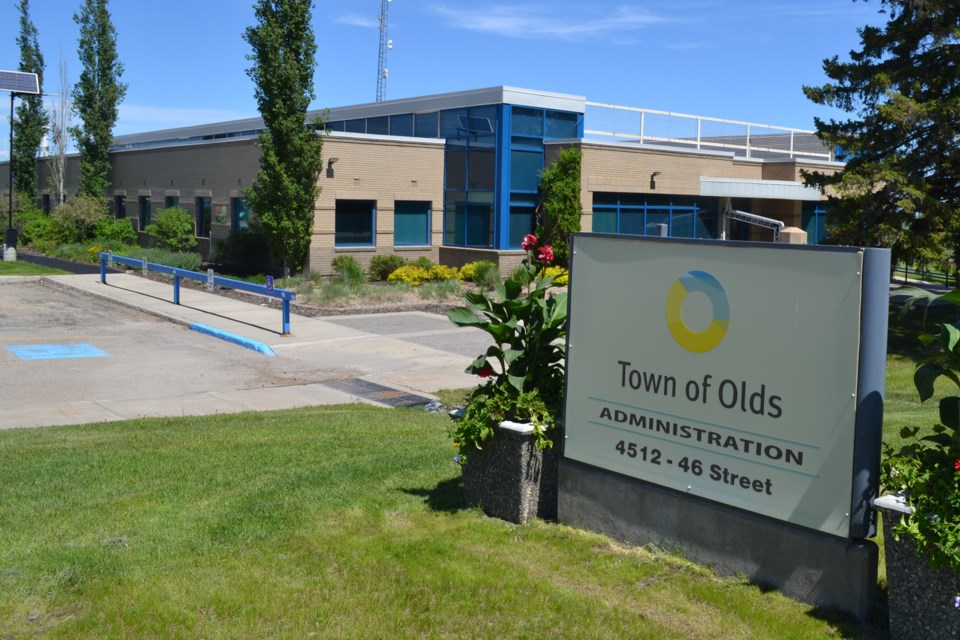OLDS — The town has averaged a 27 per cent loss of water since 2017.
That, combined with ongoing water inflow and infiltration into the sanitary system, is costing the town significant dollars, according to chief administrative officer Brent Williams.
Williams outlined those problems and others during a November policies and priorities meeting.
“These two things on average annually cost the town $1.5 million in funds that we pay to these respective commissions – water and wastewater commissions– but do not collect from ratepayers," he said.
“However, ratepayers are still paying these costs through the riders I’ll call them, on their respective utility bills. We have to factor this into our rates we charge."
At council’s request previously, town staff have proposed a three to four-year plan to solve the problem.
That proposal is expected to come before council for further discussion in the coming weeks. The town’s capital budget is not expected to be passed until a December meeting.
The first one-year phase, to begin next year, is a mixture of analyzing the problem and beginning to rectify it.
The cost for that phase is expected to be $643,000. Of that figure, $200,000 would come from a sanitary sewer relining budget. The remainder would come from the town’s utility reserve.
A big culprit is water inflow and infiltration, often brought on by heavy rain storms.
Williams said another problem is asbestos/clay pipes installed primarily in the oldest parts of town that have decayed to the point where there’s no longer any pipe there – just the outline of where it was.
Phase 1 also includes 2,800 metres of sanitary sewer relining and 15 manholes relined, in addition to the projects undertaken each year to improve infrastructure via the provincial government's Municipal Infrastructure Program.
“We expect this underground work to cost $2 - $3 million per year, every year,” Williams wrote in an email to the Albertan.
“There is no end date for the renewal of underground infrastructure. By the time we catch up in a certain area of town, another area of town will reach its end of life.”
In parts of the Deer Meadow area, Williams said "cheap” copper pipe installed by developers in the early to late 1990s have shown “substantial damage to that copper pipe, both through cathodic reactions with the underground electrical, but just due to deterioration as well.”
“It is likely that the town’s development standards at that time permitted this pipe to be used, not realizing its lack of longevity. Many of these connections are now leaking, both due to failure and reaction with underground power utilities.
“The proximal placement of the two utilities is very common, but the inadequacy of the copper pipe is not. These leaks are on the town side of the meter, so do not directly affect monthly user invoices."
Williams was asked by the Albertan if the town can sue contractors for installing the cheap pipe.
“There is no legal resource for the town,” he wrote.
The Albertan asked why work is being undertaken now, if the problem was identified as far back as 2017.
He replied that a residential connection program to address water loss issues existed “for several years prior to 2019.”
He added that “since 2019, the town had several other major projects that (presumably) took precedence over the water loss program.”
Williams became the town’s chief administrative officer last spring.
Williams said as part of the phase 1 action plan, a pilot program to install 100 smart water meters is planned. He said they’ve been back-ordered and it’s hoped they’ll arrive soon.
Plans also call for smart manhole covers to be installed.
“If the sewer is running more than average for instance, these meters will capture that and tell us which parts of town are running more than they should; more than average at a regular flow event,” he told councillors.
It’s also recommended that a summer student be hired to monitor where inflow and infiltration water loss could be happening.
“It’s a bit complicated, given the variety of textures our underground pipes have, but it’s still very much doable,” he said.
Another plan is to have the main meter at the reservoir recalibrated, he said.
“We did have it calibrated as early as a few weeks ago. It is working, but we did have a recent error which caused that, so what we’re going to be requesting from the water commission is annual calibration proof of that meter, basically," he said.
“Of course, it’s on them to say ‘yes’ to that. But it’s a request the town’s going to make, just given we’re the largest customer; millions of dollars per year, and we think it’s money well spent, even if we have to have skin in the game in that.”
During the P & P meeting, Coun. James Cummings expressed surprise about the meter calibration news.
“The idea that the meters coming into the town that are monitoring the water flow and we’re billing on are not being calibrated is kind of confusing to me, being an instrumentation control systems technician,” Cummings said.
“That would be an absolute requirement in any sort of money gathering or information-gathering meter like that.”
Meters come from manufacturers with a “standard direction” to have the meters calibrated at certain times, he said.
“That’s how meters work. Meters will always fall out of calibration, that’s how they’re designed.”
Cummings said he’s pleased that plans are afoot to address that problem.
Coun. Darren Wilson also expressed support for the plan, at least initially.
"I do support certainly moving ahead with phase 1,” Wilson said. “I’ve had some passion around water and water loss and it’s only been heightened with the infiltration and inflow issues as well.”



